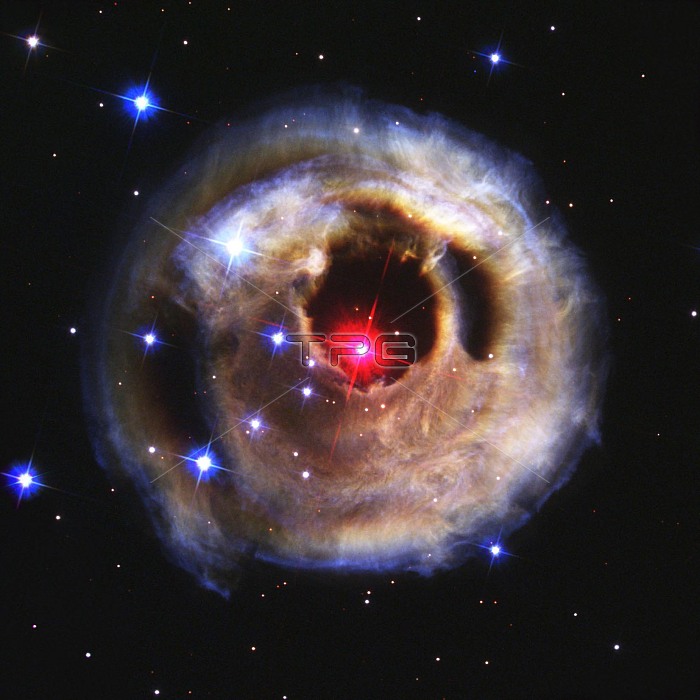
HST image of the star V838 Monocerotis reveals dramatic changes in the illumination of surrounding dusty cloud structures. The effect, called a light echo, unveiled never-before-seen dust patterns when the star suddenly brightened for several weeks in early 2002. A light echo is light from a stellar explosion echoing off dust surrounding the star that produces enough energy in a brief flash to illuminate surrounding dust. The phenomena is similar to that of a nova. A typical nova is a normal star that dumps hydrogen onto a compact white-dwarf companion star. The hydrogen piles up until it spontaneously explodes by nuclear fusion exposing a searing stellar core with a temperature of hundreds of thousands of degrees Fahrenheit. By contrast, V838 Monocerotis did not expel its outer layers. Instead, it grew enormously in size. Its surface temperature dropped to temperatures that were not much hotter than a light bulb. The outburst may represent a transitory stage in a star's evolution that is rarely seen .V838 Monocerotis is located about 20,000 light-years away from Earth in the direction of the constellation Monoceros, placing the star at the outer edge of our Milky Way galaxy.
| px | px | dpi | = | cm | x | cm | = | MB |
Details
Creative#:
TOP22309836
Source:
達志影像
Authorization Type:
RM
Release Information:
須由TPG 完整授權
Model Release:
N/A
Property Release:
No
Right to Privacy:
No
Same folder images:

 Loading
Loading